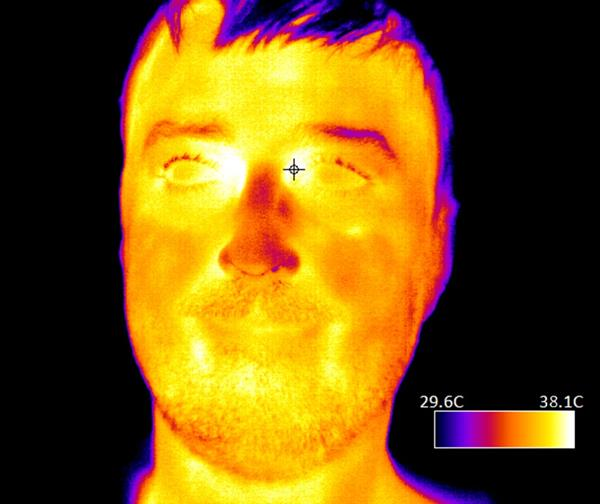Teledyne DALSA, a Teledyne Technologies company and global leader in digital imaging technology, is pleased to introduce its latest family of LWIR cameras, the Calibir™ GXM series. Using Teledyne DALSA’s own VGA 17 um microbolometer technology, Calibir GXM cameras offer exceptional infrared imaging performance, with great sensitivity, outstanding dynamic range for wide temperature coverage, and factory-calibrated radiometric performance. Calibir delivers accurate, repeatable results for critical applications like detecting elevated skin temperature in fever screening.
 Temperatures can be measured and averaged over large areas of the face. For the purpose of fever detection, the inner area of the eye along with ear holes provide the best readings.
Temperatures can be measured and averaged over large areas of the face. For the purpose of fever detection, the inner area of the eye along with ear holes provide the best readings.
“As a key component in a well-designed thermal imaging system, the new GXM640 can aid in the detection of elevated skin temperature and fever screening. Its small form factor and architecture allows integrators to select from more than ten lens options and a wide range of output solutions,” commented Jean Brunelle, Product Manager for the Calibir series. “In addition to its efficacy for health care, the Calibir GXM series will benefit many other industrial monitoring applications requiring radiometric measurement such as welding, sintering, baking, smelting and firefighting.”
The Calibir GXM640 features both shutter and shutterless operation and rapid image output on power up while delivering uniform response over the entire operating temperature range. This makes the Calibir GXM640 ideal for thermal imaging applications requiring uninterrupted image acquisition. Teledyne DALSA’s own microbolometer offers improved Noise Equivalent Temperature Difference (NETD) and the updated calibration includes customized gain correction on a per lens basis to offer even better image performance and response uniformity. These new and higher performing models will be useful for machine vision, where synchronization is required in an active inspection system, and in defense and security applications requiring low NETD and networked cameras.